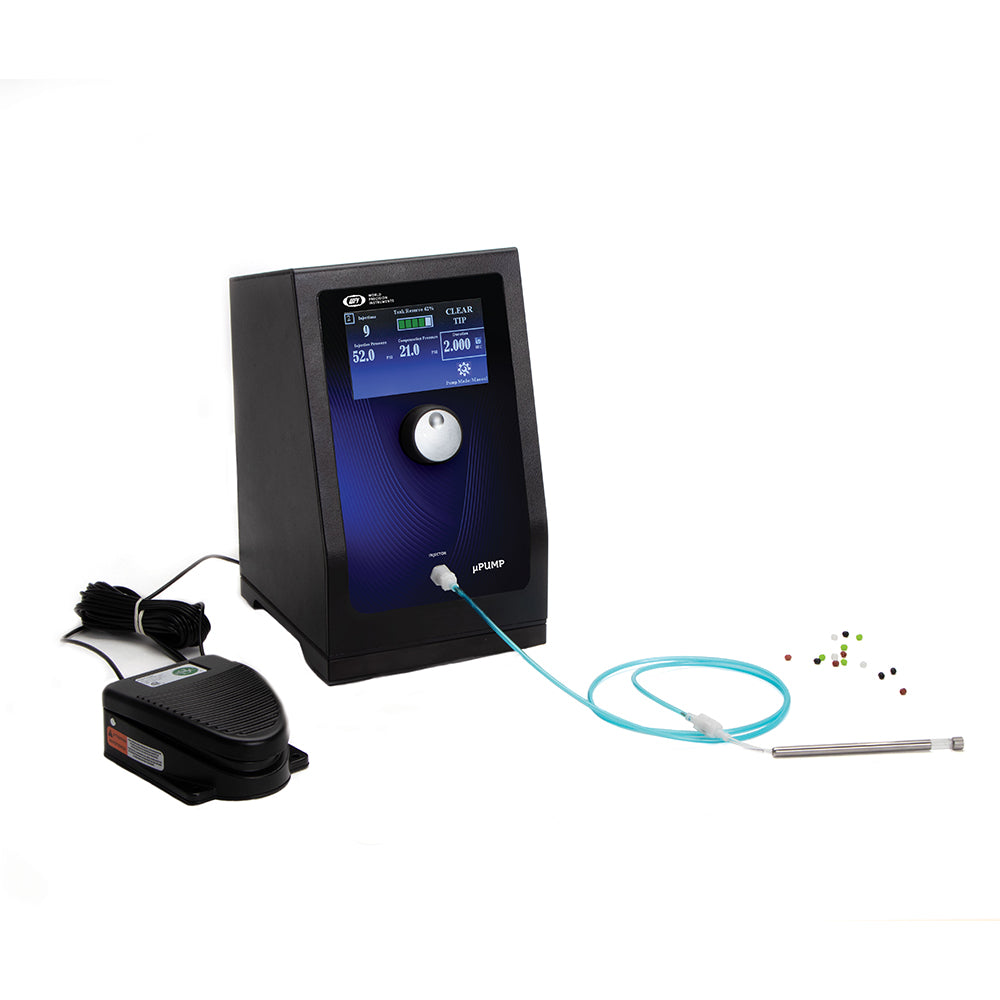Selling fast!
Get yours while you can.
Free Shipping on web orders over $50! (USA only. Some exclusions.) Our mid-season sale is on. Shop Phones






MICRO-EPUMP
Couldn't load pickup availability
Prices valid in USA, Canada, and PR only.
WPI's new generation pressure microinjectors (the PV850, µPUMP, and MICRO-ePUMP). Our three new injectors facilitate any type of microinjecion that involves glass micropipettes, conveniently paired with a compensation pressure function to prevent capillary action. *Long-taper micropipettes should be used for optimal functionality.
Now featuring: Narishige & TransferMan-compatible capillary holder included with each unit! Be sure to let your AE know what handle you need (Narishige, FemtoJet, or our standard 7mm width handle)
To learn more about our warranty options, click here.
WPI's New MICRO-ePUMP Microinjector with Integrated Pressure Source
WPI's New PV850 Microinjector: Setting Up the Hardware
PV850 Microinjector Setup Tip
µPUMP tips
This unit conforms to the following specifications:
| PRESSURE | |
| Time Interval | 0.001-2.000 s |
| Time Increment | 0.001 s |
| Injection Pressure Range, Controlled | 0.01-87.0 PSI (0.07 - 599.84 kPa) |
| Injection Pressure Increment | 0.01 PSI (0.07 kPa) |
| Compensation Pressure Range, Controlled | 0.01-87.0 PSI (0.07 - 599.84 kPa) |
| Compensation Pressure Increment | 0.01 PSI (0.07 kPa) |
| PHYSICAL SPECIFICATIONS | |
| Power | 90-264 V, 50/60 Hz |
| Power Consumption | 48 W |
| Dimensions | 160 (W) x 217 (D) x 273 (H) mm (6.3 x 8.56 x 10.76”) |
| Shipping Weight | 8.6 kg (19 lb.) |
| Ambience | For indoor use only |
| Ambient Temperature | 15ºC - 40ºC |
| Relative Humidity | 10 - 75%, non-condensing |
* Both Backfilling and Eject Pressures
| AMBIENT CONDITIONS | |
| Ambience | Only for use indoors |
| Ambient Temperature | 15° C – 40° C |
| Relative Humidity | 10% – 75%, non-condensing |
| Atmospheric Pressure |
795 kPa – 1060 kPa Use up to a height of 2000 m above sea level |
| Degree of Pollution | 2 (IEC 664) |
STORAGE
| Air Temp | Relative Humidity | Atmospheric Pressure | |
| In Transport Packaging | -20 C – 70° C | 10% – 80% | 30 kPa – 106 kPa |
| Without Transport Packaging | - | - | - |
TRANSPORT
| Air Temp | Relative Humidity | Atmospheric Pressure | |
| General Transport | -25 C – 60° C | 10% – 95% | 30 kPa – 106 kPa |
| Air Freight | -40 C – 55° C | 10% – 95% | 30 kPa – 106 kPa |







Selling fast!
Get yours while you can.
